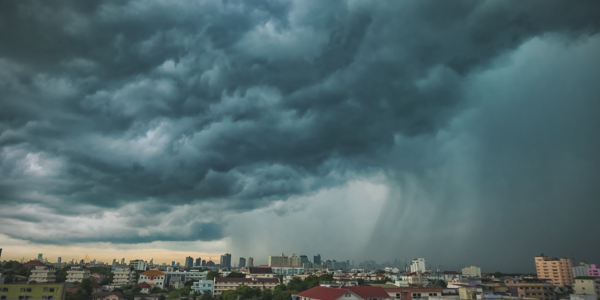Some Striking Facts About Lightning

By The RIDGEPRO®
With Lightning Safety Awareness Week, here are some facts and precautions roofing professionals must know about lightning.
We all feel joy at the return of spring. In the north the ice melts on the pond, in the west the desert blooms, and in the south lightning illuminates the sky. That’s one sign of spring all roofing professionals need to be aware of and must take precautions to avoid being struck. Did you know?
- A lightning bolt can be five times hotter than the surface of the sun at 50,000 degrees Fahrenheit.
- About 40 million lightning strikes hit the ground in the U.S. every year.
- Florida, Texas, North Carolina, Alabama, Arizona and Georgia report the most deaths and injuries from lightning.
- Lightning can strike miles away from the storm and even out of a clear, blue sky. Yes, a bolt from the blue is a thing.
- Your chances of being struck by lightning are one in a million.
But, don’t take any chances!
Arm yourself with knowledge
Know the signs of an impending storm in your area; for example, from which direction storms usually approach. Make sure your crew supervisors have weather alerts on their phones and mandate that they pay attention when the alert tone sounds. A half hour in the truck waiting for the storm to pass represents a loss in job efficiency for sure, but does not compare to a loss of life. Statistics show that many lightning injuries and fatalities occur because people take too long to get to shelter or come out too soon.
One essential thing to remember is that during a lightning event, there is NO safe place outdoors that will adequately protect you from a lightning strike. Not under a tree; not in a ditch or ravine; not even in a small shed will you be safe from the potentially lethal electricity generated during a lightning storm. While lightning bolts are certainly attracted to tall, pointy objects such as church steeples, it is a myth that lying flat in a field or on a lawn will protect you. Run, if you must, for the nearest safe shelter.
When a lightning bolt strikes an object such as a tree or even the top of a grassy hill, the electricity travels outwards until it dissipates into the earth. Experts say that a powerful bolt hitting wet earth can travel miles before becoming harmless. This ground current may not always be lethal but even small amounts of electricity can damage internal organs such as the heart, eyes and brain.
Head for the vehicles
Everyone knows that light travels faster than sound through air. That’s why it is possible to estimate the distance of a storm by counting the seconds between a lightning flash and the sound of thunder which takes five seconds to travel a mile. Any closer than five seconds and the storm is almost on top of you. Since the sound of thunder usually is first heard from about 10 miles away, the time to start packing up is when you initially hear the rumbles. If there is no safer shelter, move to the vehicles and stay inside with windows closed until the storm has passed.
Despite precautions, if the worst happens and a worker is struck, call 9-1-1 immediately and insist that they be checked out at a hospital. Lightning injury can be invisible but have lifelong repercussions. It is safe to touch someone who has been hit by lightning and to perform CPR if needed. The human body does not retain electricity from a strike. The best treatment for a lightning injury is not to need any.
Storm safety is just as urgent as rooftop safety. When thunder roars… head indoors. June 18-24, 2023 is Lightning Safety Awareness Week. Learn more at: https://www.weather.gov/gld/LightningSafetyAwarenessWeek
Learn more about The RIDGEPRO® in their Coffee Shop Directory or visit www.theridgepro.com.
About The RIDGEPRO®
The RIDGEPRO is the brainchild of Strawder Family Innovations, LLC, a multi-generational roofing team. Roofers constantly experience “close calls” and this device will surely do something to eliminate them.
The RIDGEPRO was field tested for two years before entering the marketplace. The product’s quality was also verified by a professional testing organization. Quality and safety are important to the company, so they manufacture the product in the U.S. from high-quality, aircraft-grade aluminum.























Comments
Leave a Reply
Have an account? Login to leave a comment!
Sign In